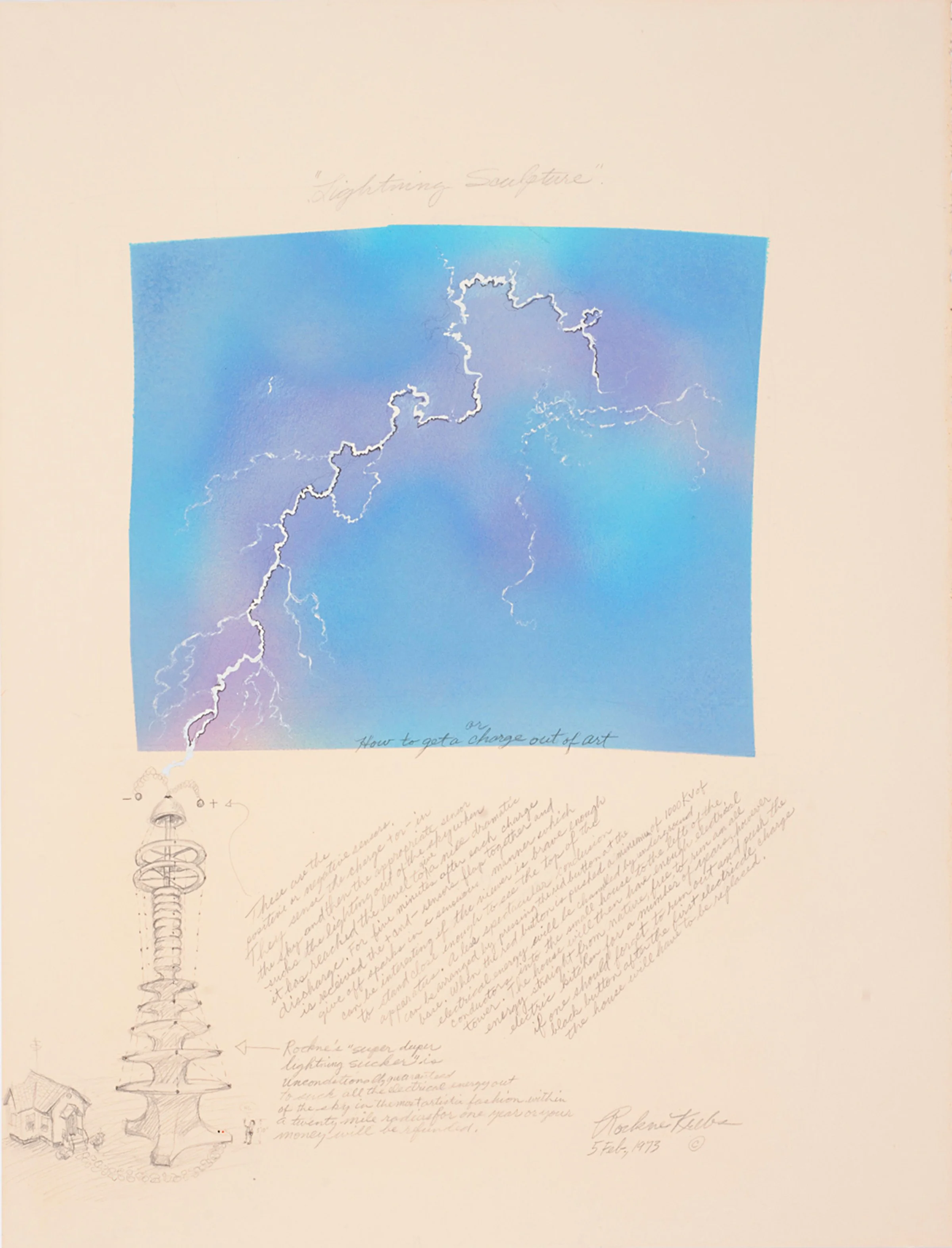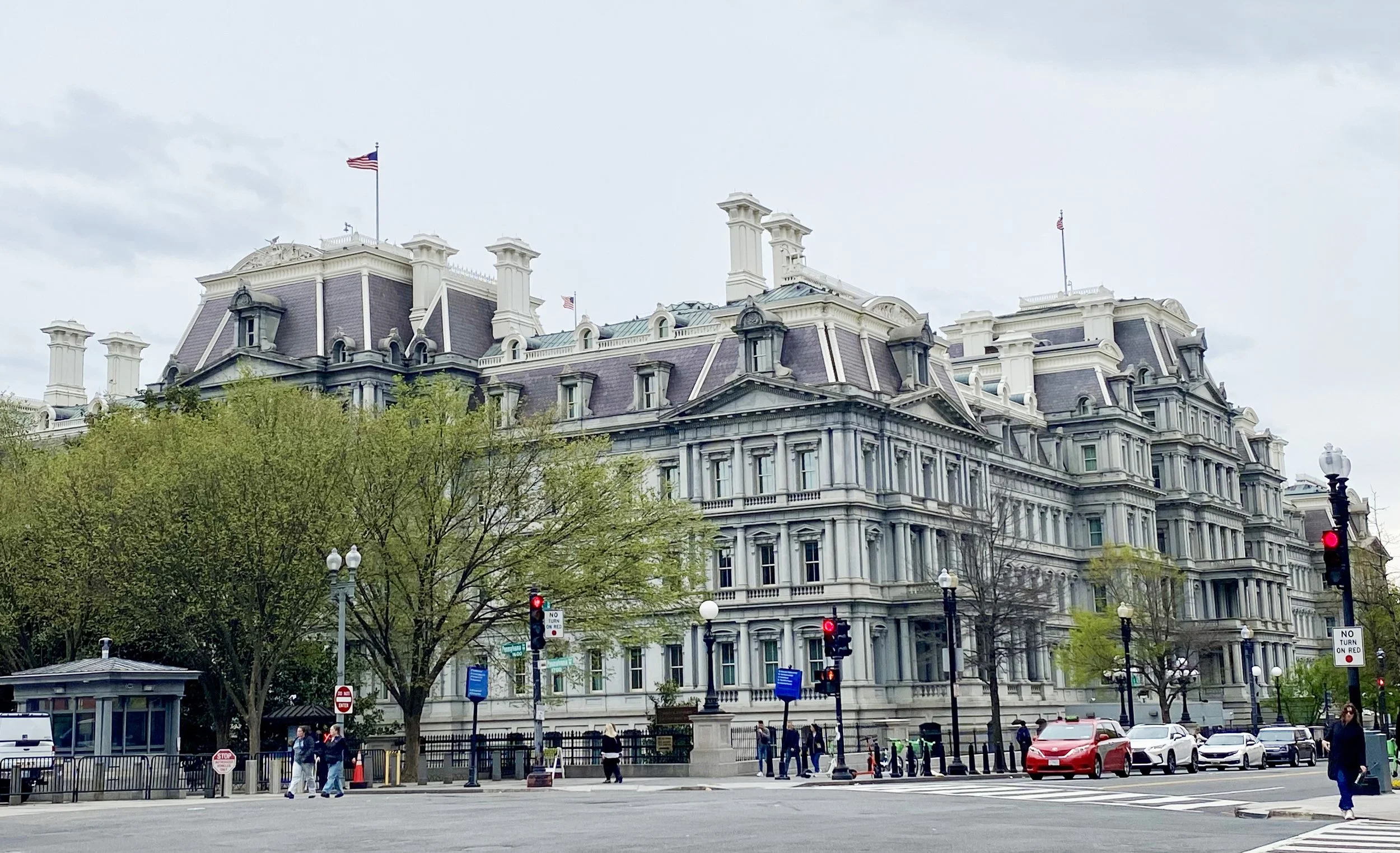
Archive Post: 4/17/2014
In Memory of Philip M. Smith, 1932-2014
Philip M. Smith, of Santa Fe, New Mexico, was a leader in national and international science and technology policy. He was the Director of the National Research Council of the National Academies of Sciences and Engineering in the 1980s and 1990s. Previously he was an Associate Director of the White House Office of Science and Technology Policy in the Ford and Carter administrations.
Phil Smith and Rockne Krebs had a friendship that spanned more than four decades, and a strong mutual respect for each other’s life's work.
Phil's friendship, sound advice and guidance will be greatly missed. – HK
Phil and Rockne, Baxter Art Gallery, California Institute of Technology, 1983.

In Phil’s words -
“Rockne Krebs: An Appreciation
Rockne and I met not long after his breakout show in the 1960s at
the Corcoran where “Ra” and his other site-specific pieces took the Washington and indeed the national art world by storm. I sought him out and we met for dinner. We hit it off, starting a life-long friendship that only ended with his death in 2011.
Although I knew the work of “light artists” such as Dan Flavin, I was
intrigued by Rockne’s vision for using light to create monumental environmental works as well as smaller pieces. He was fascinated by my world of science and technology and the latest discoveries in all fields. So we became fast friends, talking long into the night at his studio, at my house in Washington, DC, and on visits at the country studio in Burgess, Virginia. He visited me for lunch at the White House Mess, one time with Lynda Benglis in tow, and at the National Academy of Sciences where I arranged an exhibition of his drawings. With a huge number of other friends we watched the bicentennial fireworks on the Mall in 1976.
One evening at his DC studio, fueled by some wine, I described current research in lightning, telling Rockne that if we could capture all the daily lightning discharges on earth we could supply electricity to all humankind. A couple months later I saw “Lightning Sculpture," an imaginary piece that created a machine to harness lightning thus creating huge sculptural works in the sky. It was another sculptural use of light from Rockne’s standpoint. The drawing hung in my office in the big Victorian executive office building west of the White House for six years and then in my office at the National Academy of Sciences for a decade. With Rockne’s concurrence I gave “Lightning Sculpture” to the Spencer Museum of Art, University of Kansas (his alma mater) in 2010.” Philip M. Smith, January, 12, 2012
Excerpt from Rockne Krebs: Photographs + Interpretations by Carol Harrison.

A System "ON" Light is to be installed Above the Entrance Housing, 1977
Gift of Philip M. Smith to the Spencer Museum of Art
Exhibition Label: Rockne Krebs: Drawings for Sculpture You Can Walk Through, Aug-2013, Steve Goddard.
“In 1976-1977 Krebs was in negotiations with the Food and Drug Administration (FDA), the U.S. regulator for lasers including those in public places,” explains Philip M. Smith. “I helped him in the negotiations. The title refers to the rule the FDA eventually issued. Krebs presented me with this collage on conclusion of the negotiations. We prevailed with the FDA.”
Drawing inscription to Phillip M. Smith “To my dear friend and mentor at life, Phil.”

